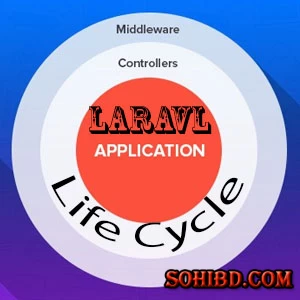Latest Update os news In World wide
Latest Update os news In World wide ETTelecom.com brings latest operating system news, views and updates from all top sources for the Indian Telecom industry Get all the latest news and updates on Operating System only on News18.com. Read all news including political news, current affairs and news headlines
The latest Windows 11 beta build brings several new UI updates to the operating system. ... Sign up to get breaking news, reviews, opinion, analysis and more
A lost IBM PC/AT model? Analyzing a newfound old BIOS
Some people not only have a very particular set of skills, but also a very particular set of interests that happen to align with those skills perfectly. When several unidentified and mysterious IBM PC ROM chips from the 1980s were discovered on eBay, two particular chips’ dumped contents posed particularly troublesome to identify. In 1985, the FCh model byte could only mean the 5170 (PC/AT), and the even/odd byte interleaving does point at a 16-bit bus. But there are three known versions of the PC/AT BIOS released during the 5170 family’s lifetime, corresponding to the three AT motherboard types. This one here is clearly not one of them: its date stamps and part numbers don’t match, and the actual contents are substantially different besides. My first thought was that this may have come from one of those more shadowy members of the 5170 family: perhaps the AT/370, the 3270 AT/G(X), or the rack-mounted 7532 Industrial AT. But known examples of those carry the same firmware sets as the plain old 5170, so their BIOS extensions (if any) came in the shape of extra adapter ROMs. Whatever this thing was – some other 5170-type machine, a prototype, or even just a custom patch – it seemed I’d have to inquire within for any further clues. ↫ VileR at the int10h.org blog I’ll be honest and state that most of the in-depth analysis of the code dumped from the ROM chips is far too complex for me to follow, but that doesn’t make the story it tells any less interesting. There’s no definitive, 100% conclusive answer at the end, but the available evidence collected by VileR does make a very strong case for a very specific, mysterious variant of the IBM PC being the likely source of the ROMs. If you’re interested in some very deep IBM lore, here’s your serving.
Read More 6 November 2025 | 4:19 amThe Microsoft SoftCard for the Apple II: getting two processors to share the same memory
We talked about the Z80 SoftCard, Microsoft’s first hardware product, back in 2023, but thanks to Raymond Chen and Nicole Branagan, we’ve got some more insights. The Microsoft Z-80 SoftCard was a plug-in expansion card for the Apple II that added the ability to run CP/M software. According to Wikipedia, it was Microsoft’s first hardware product and in 1980 was the single largest revenue source for the company. ↫ Raymond Chen at The Old New Thing And Chen links to an article by Branagan from 2020, which goes into even more detail. So there I was, very happy with my Apple ][plus. But then I saw someone on the internet post, and it seems that my Apple is an overpriced box with a toy microcontroller for a CPU, while real computers use an Intel 8080, 8085 or Zilog Z80 to run something called “CP/M”… but I’ve already spent so much money on the Apple, so can I turn it into a real computer? ↫ Nicole Branagan I have a soft spot for this particular subgenre of hardware – add-in cards that allow you to run an entirely different architecture inside your computer – and soon, I’ll be diving into a particularly capable example here on OSNews.
Read More 6 November 2025 | 2:46 ambluetui and restterm: two beautiful TUI applications
There’s something incredibly enticing and retrofuturistic about a well-designed TUI, or text-based user interface. There’s an endless list number of these, but two crossed my path these past few days, and I found them particularly appealing. First, we’ve got bluetui, an application for managing Bluetooth connections on Linux systems with bluez installed. The second is resterm. Resterm is a terminal-first client for working with HTTP, GraphQL, and gRPC services. No cloud sync, no signups, no heavy desktop app. Simple, yet feature rich, terminal client for .http/.rest files. It pairs a Vim-like-style editor with a workspace explorer, response diff, history, profiler and scripting so you can iterate on requests without leaving the keyboard. ↫ restterm GitHub page I don’t use TUIs or the command line in general all that much, but these are two excellent examples of just how beautiful and user-friendly a good text-based user interface can really be. The command line is about a lot more than just archaic, cryptic incantations designed in the 1960s.
Read More 6 November 2025 | 2:39 amSculpt OS 25.10 released
In the light of this year’s roadmap focus on “rigidity, clarity, performance”, Sculpt OS 25.10 looks the same as the version 25.04 but might feel different as it includes countless under-the-hood improvements of the two preceding framework releases 25.05 and 25.08. User interaction on performance-starved platforms like the PinePhone has become visibly smoother thanks our recent CPU scheduling advances. The streamlined block-storage stack combined with various refinements of the package-installation mechanism make the on-target installation of 3rd-party components a bliss. Regarding supported hardware, we steadily follow the tireless work of the Linux kernel community. All PC driver components using Linux kernel code are now consistently based on kernel version 6.12. ↫ Sculpt OS 25.10 release announcement There’s also an optional brand new configuration format, which optionally replaces Scultp’s use of XML for this purpose. Norman Feske, one of the co-founders of Genode Labs, published an article detailing how to test this new format, which also goes much deeper into how it works. For Sculpt OS’ 25.10 release, Alexander Böttcher has also released an experimental image with five different kernel to choose from. The image is for PC, and works as a live system so there’s no need to install it to explore Sculpt OS. Speaking of Alexander Böttcher, he also published an article about improvements and changes to Sculpt OS’ lockscreen component. This component has existed for a very long time, and has been improved considerably over the years, and Böttcher’s article details how to install it, configure it, and use it.
Read More 4 November 2025 | 3:25 amDebian to add hard Rust dependency to APT
It seems like a number of Debian ports are going to face difficult times over the coming months. Debian developer Julian Andres Klode has sent a message to the Debian mailing lists that APT will very soon start requiring Rust. I plan to introduce hard Rust dependencies and Rust code into APT, no earlier than May 2026. This extends at first to the Rust compiler and standard library, and the Sequoia ecosystem. In particular, our code to parse .deb, .ar, .tar, and the HTTP signature verification code would strongly benefit from memory safe languages and a stronger approach to unit testing. ↫ Julian Andres Klode The problem for a lot of architectures that Debian supports, in one way or another, is that Rust and its toolchain simply aren’t available for them. As such, Julian Andres Klode states, rather directly, that these architectures have about six months to get themselves a full Rust toolchain, or sunset their Debian ports. The Debian PA-RISC (hppa) and Alpha ports, for instance, do not have a Rust toolchain port, and most likely won’t be getting one either, especially not within six months. The reasoning for moving towards a hard Rust dependency for APT is the same as it is in every other similar case: Debian’s and APT’s developers want to be able to make use of modern tools and technologies, even if that means dead architectures get left behind. As much as I am a massive fan of retro-architectures like PA-RISC, I really don’t want otherwise modern Linux distributions to eschew modern tools and technologies just because they’re not available for an architecture that died in 2005. I own and use the last and most powerful PA-RISC workstation running HP-UX as a retro platform, so I definitely care – but I really don’t expect Debian or Fedora or whatever to waste any resources on supporting them if that means holding the distributions back for everyone else using it on actually modern platforms. If there’s a large enough community of people around such architectures, they’ll keep the Linux train running. If not, well, that’s life.
Read More 3 November 2025 | 4:52 amMicrosoft breaks Task Manager in Windows 11, hard
Let’s take a look at how things are going at Microsoft, whose CEO claimed a few months ago that 30% of their code was generated by “AI”. After installing Windows Updates released on or after October 28, 2025 (KB5067036), you might encounter an issue where closing Task Manager using the Close (X) button does not fully terminate the process. When you reopen Task Manager, the previous instance continues running in the background even though no window is visible. This results in multiple lingering instances of taskmgr.exe, consuming system resources and potentially degrading device performance. Additional instances appear as “Task Manager” in the Processes tab and as “Taskmgr.exe” in the Details tab. Although the impact is less if Task Manager is opened and closed a few times, many instances accumulated over time can cause noticeable slowdowns in other applications. ↫ The Windows Health Dashboard Well okay then.
Read More 3 November 2025 | 4:01 amConfiguring cwm on OpenBSD
For those unfamiliar, cwm is the Calm Window Manager. It’s part of the OpenBSD base distribution as one of the native window managers, along with an old version of fvwm and the venerable twm. It’s pretty simple but surprisingly powerful, a floating window manager with some basic manual tiling. It’s keyboard-centric, has an application launcher and highly configurable menus. It uses groups rather than workspaces which provides a lot of flexibility. My configuration isn’t particularly groundbreaking, but it’s comfy and suits me well. I can happily live in it indefinitely, though I do split my time between cwm and Xfce with occasional forays into other window managers or Wayland compositors. This has nothing to do with cwm limitations and everything to do with me being curious and craving novelty. It’s cwm that I return to, because it’s entirely unsurprising and very capable, and also because it’s part of OpenBSD’s base so I know I’m dealing with software that’s been refined and audited and refined again. ↫ Antony Fox-Bramwell If you opt for a default installation of something like OpenBSD, without any additional desktop environments like Xfce, when you start X, you’ll be served with the default OpenBSD window manager: cwm, or the calm window manager. At first glance, it looks incredibly basic and, to most people, archaic and unusable, but what it lacks in sparkles and boondoggles it more than makes up for in flexibility and configurability. The problem, however, is that it’s not exactly intuitive to mold cwm into something that works for you. Articles like this one, by Antony Fox-Bramwell, function as great springboards into the world of configuring cwm. If you do an internet search for similar articles, you’ll find tons of other examples that can help you become more capable at configuring cwm. Most of us are probably just fine accepting something like KDE or Xfce, but if those just don’t scratch your itch, diving into cwm could be just what you’re looking for.
Read More 3 November 2025 | 3:51 amV7 pwd, converted to modern POSIX systems
This is a conversion of the original V7 pwd program for use on POSIX systems (tested primarily on Linux). This is mostly of historical interest — modern systems have a library routine or system call for getting the current directory, and don’t need this. I’ve attempted to make the minimum set of logic/functionality changes needed to make the program work, preserving the core of the original logic. I’ve made slightly more aesthetic changes, to make reading easier for a post-standardization C speaker. ↫ Cliff L. Biffle Over on Fedi, Cliff L. Biffle provides more details as to why he undertook this project.
Read More 2 November 2025 | 9:13 pmAMD to enter ARM market with new “Sound Wave” APU
AMD is expanding its processor portfolio beyond the x86 architecture with its first ARM-based APU, internally known as “Sound Wave.” The chip’s existence was uncovered through customs import records, confirming several details about its design and purpose. Built with a BGA-1074 package measuring 32 mm × 27 mm, the processor fits within standard mobile SoC dimensions, making it suitable for thin and light computing platforms. It employs a 0.8 mm pitch and FF5 interface, replacing the FF3 socket previously used in Valve’s Steam handheld devices, further hinting at a new generation of compact AMD-powered hardware. ↫ Hilbert Hagedoorn at The Guru of 3D It only makes sense for AMD to enter the market for ARM SoCs, as it’s a whole section of the processor market they’re not tapping into. Even if they don’t manage to compete with the best ARM processors out there, they can still serve the mid and lower end just fine.
Read More 2 November 2025 | 9:05 pmRemoving obfuscation in Minecraft: Java Edition
Gaming isn’t something we talk about very often here on OSNews, but I think this piece of news is actually a rare piece of good, welcome news from this industry. Mojang, the Microsoft-owned company behind Minecraft, has announced it’s going to stop obfuscating the code behind the Java edition of Minecraft. A refresher: the Java edition of Minecraft is the original version of the game, which exists alongside the Bedrock Edition, which is written in C++. Both variants are kept more or less in sync with each other. The Java edition has historically been far more moddable, and comes with far fewer restrictions than the Bedrock Edition, which Microsoft maintains far tighter control over. Still, the modding scene around the Java Edition sprung up in spite of Mojang and Microsoft, not because of them, but over the years the modding scene has been embraced more and more by these two companies. The final step in this embrace comes today as Mojang will no longer obfuscate the code behind th Java Edition. Minecraft: Java Edition has been obfuscated since its release. This obfuscation meant that people couldn’t see our source code. Instead, everything was scrambled – and those who wanted to mod Java Edition had to try and piece together what every class and function in the code did. But we encourage people to get creative both in Minecraft and with Minecraft – so in 2019 we tried to make this tedious process a little easier by releasing “obfuscation mappings”. These mappings were essentially a long list that allowed people to match the obfuscated terms to un-obfuscated terms. This alleviated the issue a little, as modders didn’t need to puzzle out what everything did, or what it should be called anymore. But why stop there? ↫ Minecraft website This is excellent news for the game, the wider modding community, and players. Minecraft is still a massively popular game, and making modding easier is very welcome, as for a lot of people, mods are what make Minecraft actually interesting. It’s also rare to see a massive force in gaming making a positive step like this, so they deserve the few kudos.
Read More 30 October 2025 | 5:00 amHow did the Windows 95 user interface code get brought to the Windows NT code base?
After the release of Windows 95, with its brand new and incredibly influential graphical user interface, it was only a matter of time before this new taskbar, Start menu, and everything else would make its way to Microsoft’s other operating system line, Windows NT. The development of Windows 95 more or less lined up with that of Windows NT 3.5, but it wouldn’t be until Windows NT 4.0, released a little less than a year after Windows 95, that NT, too, would have the brand new user interface. Raymond Chen has published a blog post detailing the cooperation and interplay between the Windows 95 and Windows NT teams, and, as always with Chen, it’s a joy to read. Members of the Windows 95 user interface team met regularly with members of the Windows NT user interface team to keep them aware of what was going on and even get their input on some ideas that the Windows 95 team were considering. The Windows NT user interface team were focused on shipping Windows NT, but they appreciated being kept in the loop. During the late phases of the development of Windows 95, the Windows NT side of the house took a more active role in bringing the Windows 95 user interface to Windows NT. ↫ Raymond Chen at The Old New Thing Chen details there was a lot of code-sharing, to the point where the Windows 95 version of the GUI contained NT-specific code, and vice versa. This code-sharing was quite a lot less elegant than today with tools like git, since Microsoft’s own internal source code system called SLM (pronounced ‘slime’) did not support branches, so they had to regularly perform three-way merges manually. It was a different time, for sure. Anyway, it’s amazing how much of this ancient Microsoft lore could’ve been lost to time, or shrouded in mystery, if it wasn’t for someone like Raymond Chen regularly sharing the stories from Microsoft’s past.
Read More 30 October 2025 | 12:57 amOpenIndiana 2025.10 released
OpenIndiana, the Illumos distribution for general use, has released its latest snapshot release, and there’s some really interesting things in there. To refresh your memory: Illumos is a fork of the final OpenSolaris release, based on Solaris 11, before Oracle closed Solaris back up. It’s been in development ever since that fateful day back in 2010, and several Illumos distributions with unique identities have sprung up around the project. OpenIndiana is one of them, and functions like a rolling release with a snapshot release every six months. OpenIndiana 2025.10 was released today, and this snapshot’s changelog covers changes over the past six months. It comes with all the latest open source packages you would expect, like the latest or at least very recent versions of Firefox, Thunderbird, LibreOffice, and much more, but the GNOME version (44.4 from 2023) is definitely a bit outdated. There’s a ton new utilities written in Rust, and the usual bug and security fixes as well, like for crucial utilities such as OpenSSL and OpenSSH, and things like Python versions 3.14 3.13, 3.12, and 3.9. A particularly interesting bullet point is maintenance work and improvements for Sun Ray support, and the changelog notes that these little thin clients are still popular among their users. I’m very deep into the world of Sun Rays at the moment, so reading that you can still use them through OpenIndiana is amazingly cool. There’s a Sun Ray metapackage that installs the necessary base components, allowing you to install Sun’s/Oracle’s original Sun Ray Server software on OpenIndiana. Even though MATE is the default desktop for OpenIndiana, the Sun Ray Server software does depend on a few GNOME components, so those will be pulled in. I’ve definitely put this on my list, once I’m done with my current Sun Ray deep dive on Solaris 10. If you’re interested in SPARC support, there’s quite a few machines that do work with the SPARC version of OpenIndiana, and recently, there’s been a lot of progress on this front. Running the SPARC version on various servers can work, but desktop use, say, on a Sun Ultra 45, is a bit more problematic due to boot issues and a lack of graphics drivers. The work is ongoing, though, and there’s been a ton of renewed interest.
Read More 29 October 2025 | 2:46 amWindows to automatically suggest a memory scan after a blue screen
Microsoft is introducing a new feature in Windows to better deal with blue screens of death. In the release notes for Windows 11 Insider Preview Build 26220.6982 (Dev Channel), the company detailed that after a user experiences a blue screen, Windows will automatically perform a memory scan. We’re introducing a new feature that helps improve system reliability. If your PC experiences a bugcheck (unexpected restart), you may see a notification when signing in suggesting a quick memory scan. If you choose to run it, the system will schedule a Windows Memory Diagnostic scan to run during your next reboot (taking 5 minutes or less on average) and then continue to Windows. If a memory issue is found and mitigated, you will see a notification post-reboot. ↫ Amanda Langowski at the Windows Blogs In its current iteration, this memory scan will trigger after every single error code to collect as much data as possible, but Microsoft states it will refine and narrow the number of error codes in the future. In addition, this feature will not be available on Arm64 and systems with Administrator Protection and/or BitLocker without Secure Boot. Let’s hope this feature won’t be a nuisance, but an actually useful feature that helps people uncover memory problems that otherwise remain undiagnosed.
Read More 29 October 2025 | 1:56 amPython Software Foundation has bigger spine than big tech
Back in January 2025, the Python Software Foundation applied for a $1.5 million grant from the US government’s National Science Foundation, under the Safety, Security, and Privacy of Open Source Ecosystems program, to address structural vulnerabilities in Python and PyPI. After a lot of paperwork, their application was approved, but upon receiving the contractual agreement, the Python Software Foundation decided to back out. Why? We became concerned, however, when we were presented with the terms and conditions we would be required to agree to if we accepted the grant. These terms included affirming the statement that we “do not, and will not during the term of this financial assistance award, operate any programs that advance or promote DEI, or discriminatory equity ideology in violation of Federal anti-discrimination laws.” This restriction would apply not only to the security work directly funded by the grant, but to any and all activity of the PSF as a whole. Further, violation of this term gave the NSF the right to “claw back” previously approved and transferred funds. This would create a situation where money we’d already spent could be taken back, which would be an enormous, open-ended financial risk. In the end, however, the PSF simply can’t agree to a statement that we won’t operate any programs that “advance or promote” diversity, equity, and inclusion, as it would be a betrayal of our mission and our community. ↫ Loren Crary at the PSF blog The fact that this is news at all is a deeply sad state of affairs, but it’s great to see at least some organisations in tech still have a spine. In a world where tech giants and their sleazy CEOs are falling over each other to lather the US president in bribes and tasteless gifts, it’s refreshing to see someone passing up on what would be an enormous amount of money for them. The PSF operates on a budget of $5 million a year, so $1.5 million would be a massive boon for the effort. The efforts of the PSF regarding outreach have been incredibly successful over the years. PyCon US had 1% female speakers in 2011, 7% in 2012, 15% in 2013, 33% in both 2014 and 2015, and 40% in 2016. “DEI” efforts usually just mean the gruntwork of reaching out to members of underrepresented groups within your community, and ensuring they feel welcome, safe, and respected. Monocultures tend to be self-destructive, whether we’re talking about operating systems or people. Having perspectives from people with different backgrounds, different life experiences, and different approaches is a massive net benefit to your organisation. Making efforts to foster such environments illegal is absolute batshit insanity, and I’m glad that unlike cowards like Tim Cook or Sundar Pichai, the Python Software Foundation has a spine and is standing up for what’s right.
Read More 29 October 2025 | 12:28 amRelated News Feed
See All FeedMore Information Latest Update os news In World wide
Latest Update os news In World wide
What is the latest operating system in 2022?
Windows 11 is the latest major release of Microsoft's Windows NT operating system, released in October 2021
What is the latest operating system?
As of October 2021, the most recent version of Windows for PCs and tablets is Windows 11, version 21H2.
Which is latest OS for mobile?
The latest version of Android OS is 12, released in October 2021. Learn more about OS 12, including its key features.











